The Airborne Museum at Sainte-Mère-Église is considered a ‘must see’ for those touring Normandy, and it’s usually one of the first or last stops on a tour of the Normandy beaches because it’s out there on the western flank, which is exactly why the US airborne forces set out to capture it on the night of 5th/6th June 1944.
I originally reviewed it for Mechtraveller in 2019, and revisited in 2023 when we were researching the D-Day Landing guidebook*. Then, the new WACO building was under construction and due to be completed for the 85th Anniversary of D-Day in 2024. This summer (2025) I managed to get back and see it. Hence the “Updated” in the title.
The History (quickly!)
The 82nd and 101st US Airborne divisions were tasked with taking the small town of Sainte-Mère-Église (and surrounding roads & bridges), which sat on the junction of five roads including the main road to Cherbourg, ten kilometres inland (west) of Utah Beach. The purpose was to guard the western flank of the five invasion beaches.
Over 13,000 paratroopers from the two divisions were dropped in the dark in the early hours of 6 June. Due to navigational issues, cloud banks, enemy AA fire and other problems, many were mis-dropped and scattered all over the countryside. Thirty men dropped into the town itself and fell prey to the German garrison. Quite a few paratroopers lost vital equipment that was blasted off them when they exited aircraft that were flying faster than they should have been.
On the ground some paratroopers managed to find each other, often from different regiments and even divisions, collect together and push on with their missions. Others spent all night alone and hiding from Germans. All in all it was pretty chaotic…. and terrifying.
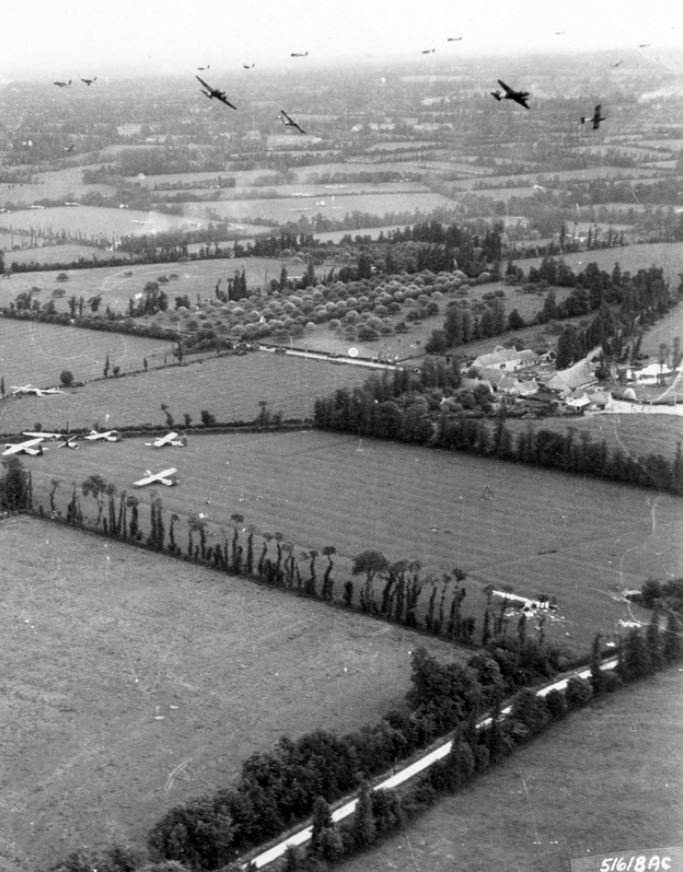
Just before dawn, and during the day, almost 4,000 airborne troops were also flown in on gliders. These were support troops and anti-tank guns in American built Waco gliders and some British built Horsa gliders, which carried heavier equipment like vehicles, howitzers, medical units, and signal units.
The Germans put up stiff resistance and the US paratroopers had to defend themselves against counter-attacks in key locations around Sainte-Mère-Église including the bridges of la Fière and Chef-du-Pont, while at the same time trying to take the town itself. Eventually, at noon on 7th June they were reinforced by soldiers who had landed on Utah Beach.
The Airborne Museum
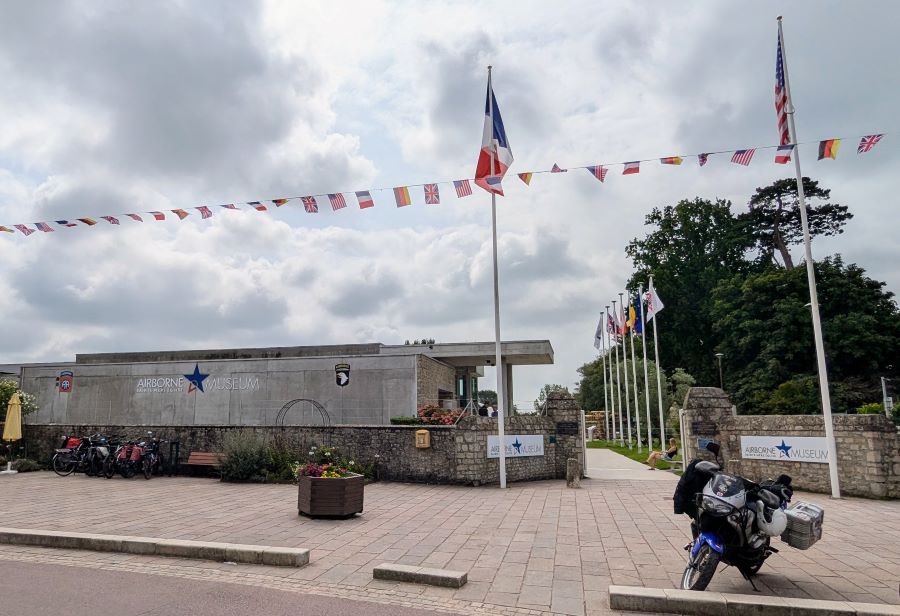
The Airborne Museum sits on the church square in the centre of town, only 50 metres from the church itself, adorned with the replica of US paratrooper Pvt John Steele dangling from his parachute caught up on the steeple. (It’s not quite accurate. He was actually caught up a bit lower down on the opposite side.)
Not counting the Entrance building (ticketing & shop) there are now four main buildings and a dual-purpose conference/exhibition space…
- The C-47 building
- Operation Neptune
- The Occupation building
- The (new) WACO building
- The Ronald Reagan Conference Centre
The buildings are set in an open grassy space with a few vehicles and guns displayed outside… starting by the entrance with an M4 Sherman tank (not a piece of Airborne kit!) which is nearly always photographed with the Sainte-Mère-Église church & Private Steele juxtaposed cleverly in the background by better photographers than me, and on sunnier days!
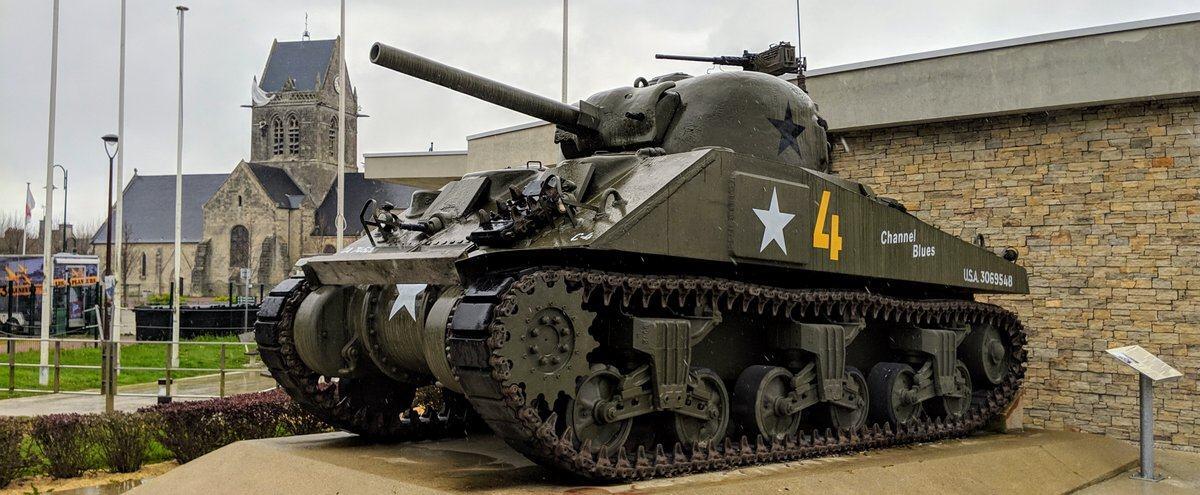
As an aside, the museum’s first three buildings were architecturally themed (something I didn’t notice at first!): a round parachute, a modern ram-air parachute and an aerofoil (wing) shape. They seem to have given up on that trend with the new WACO building which just looks like a large box!
The Occupation building
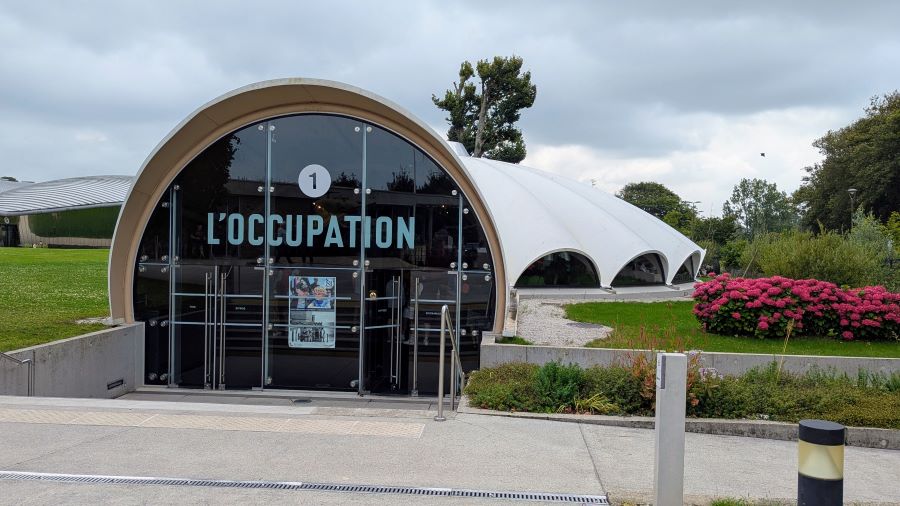
The Occupation building is the original white parachute shaped building that used to house the museum’s Waco glider. It was a bit of a squeeze, with one wing stuck out into the entrance hall!
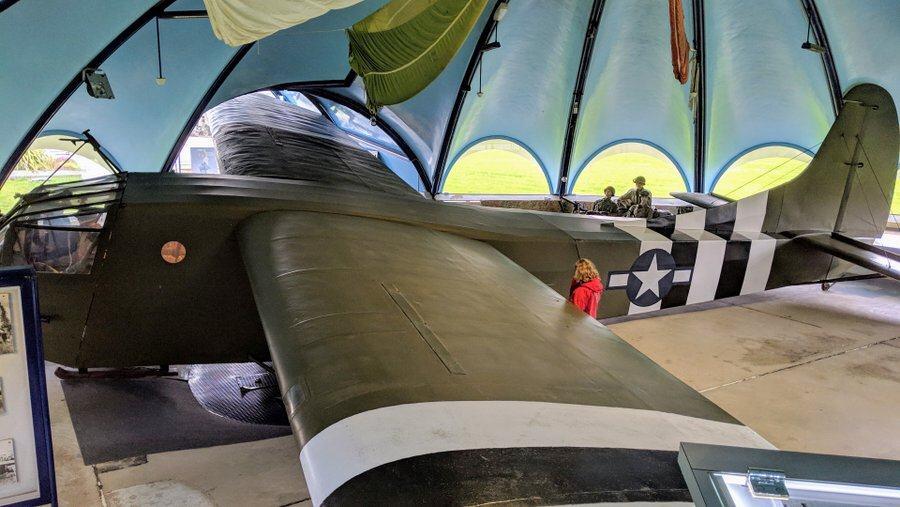
Now that the glider has been moved into its own dedicated new building, the parachute building has been repurposed to house a new permanent exhibition on the Occupation and the French Resistance in the Sainte-Mère-Église area. And the entrance hall is a little clearer!
It explores the way the Germans controlled daily life for the locals through the implementation of rationing, curfews, movement restrictions, and forced labour. This is done through exhibits and an immersive experience that enables visitors to witness scenes like the church square during the German occupation.
The C-47 building
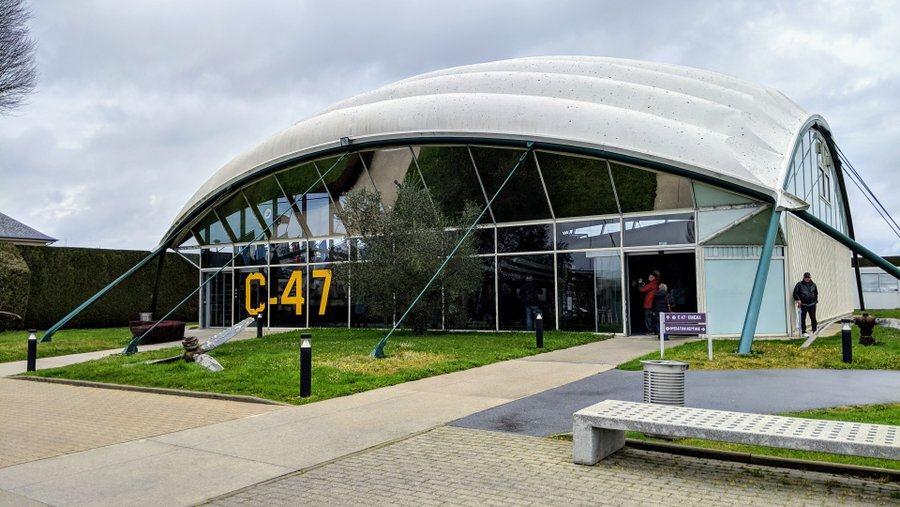
The centrepiece of the C-47 building is, naturally, a C-47 ‘Skytrain’, the workhorse of airborne operations. This particular aircraft has a significant history. It played a part in many of WW2’s most famous airborne operations.
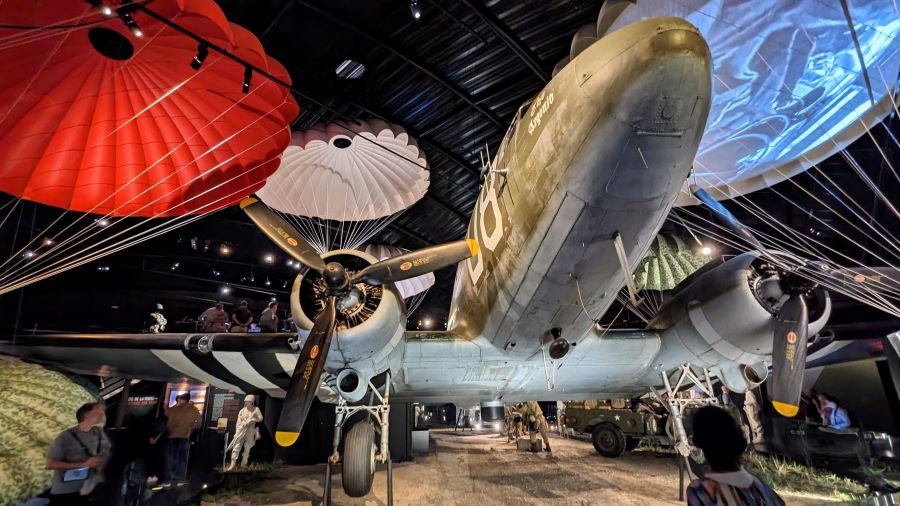
It was manufactured in Long Beach CA in December 1943. Six months later on 6 June 1944 it carried a stick of 101st Airborne paratroopers to Normandy and the next day towed in an 82nd Airborne Waco glider. It made another para drop in August and then, on 17th & 18th September, during Operation Market Garden, it towed 82nd Airborne gliders into Holland. In December 1944 during the ‘Battle of the Bulge’ (in the Ardennes) it dropped supplies to US forces around Bastogne, and finally it participated in Operation Varsity in March 1945, dropping airborne troops on the eastern bank of the Rhine in support of the Rhine crossing into Germany.
Originally, the C-47 had been set in a tableau recreating General Dwight D. Eisenhower’s visit to Greenham Common airfield on the early evening of 5th June to see off men of the 502nd Parachute Infantry Regiment as they embarked for Normandy. However, sometime between my visits in 2019 & 2023, the museum tinted the giant glass wall and turned the building from a daylight display into what I call a ‘dark focus’ gallery.
I don’t like ‘dark focus’ galleries, but these days museums love them. They make the whole gallery dark or gloomy and then light up the artefacts they want you to focus on. I prefer to make up my own mind on what I want to look at. I like ‘light focus’ galleries with well-illuminated artefacts. So for me, this was a retrograde step.
The building also has a collection of artifacts, weapons, and other items of equipment in display cabinets around the walls, and on a viewing platform over the C-47. Among them, General Gavin’s uniform & helmet**. And I was intrigued by the slide rule Load Calculator for the C-47. Overload and imbalance were significant factors in the widespread scattering of airborne troops in the night on D-Day.
The Operation Neptune Building
The displays in here focus on the parachute drop and the battle on the ground. It starts with an excellent immersive trail through a C-47 with its paratroopers and then out through the door onto a glass walkway above the night-time landscape of the Cotentin Peninsula with C-47s below, dropping their sticks of paratroopers and ack-ack rising to meet them. It’s noisy and flashy!***
This video from 2019 covers the Op Neptune building but also the old C-47 building in its former daylight mode.
After the C-47 experience, the trail passes through dioramas setting the scene on the ground, with German & US troops and their equipment.
The WACO Building
The new 1,000m² WACO building gives proper space to everything that was squeezed into the old building (now the Occupation building). That’s not just the museum’s glider, but some of the photos and artefacts are now displayed in the first & last galleries of the new building, and there is now a small cinema.
The centrepiece though, is the Waco CG-4A glider in its spacious new hall, displayed in a ‘just landed in Normandy’ scene. Troops are in the process of unloading a jeep from the glider, which will no doubt be used to tow the 75mm Airborne M1A1 Pack Howitzer that has already been unloaded.
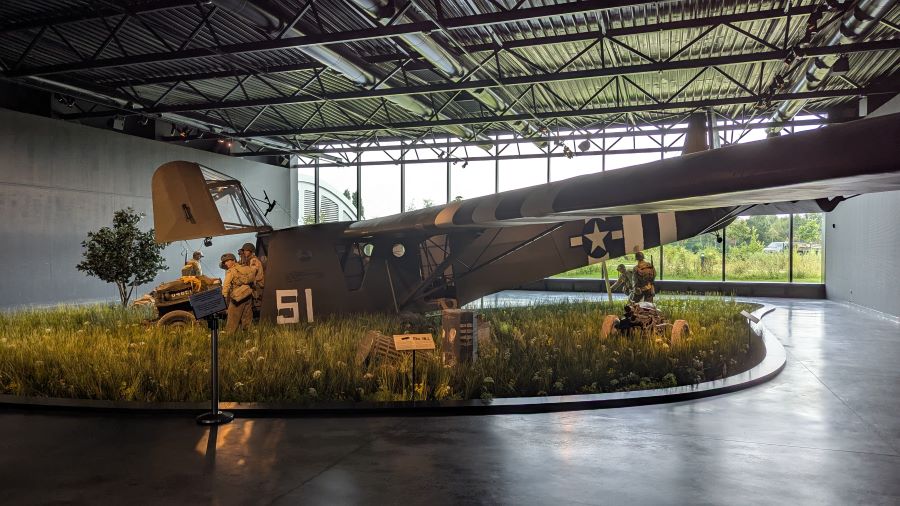
Some 13,900 Waco gliders were built, and this is one of only six remaining. During the transfer to its new home, it was repainted, and it changed its load. In its old setting it was carrying a stick of 13 troopers. Now it has been reconfigured to carry a jeep (+ four troops), with the cockpit section lifted up on its hinges. The whole scene, in tall grass, is super-realistic!
One of the most un-expected displays in the main hall is the interior setup for an emergency evacuation Waco glider. The Glider Snatch Pick-UP (GSPU) technique was simple as a concept; you raise a stretchy nylon towline loop on two poles and attach it to your glider. Then a C-47 swoops in and snatches it, dragging the glider into the air.
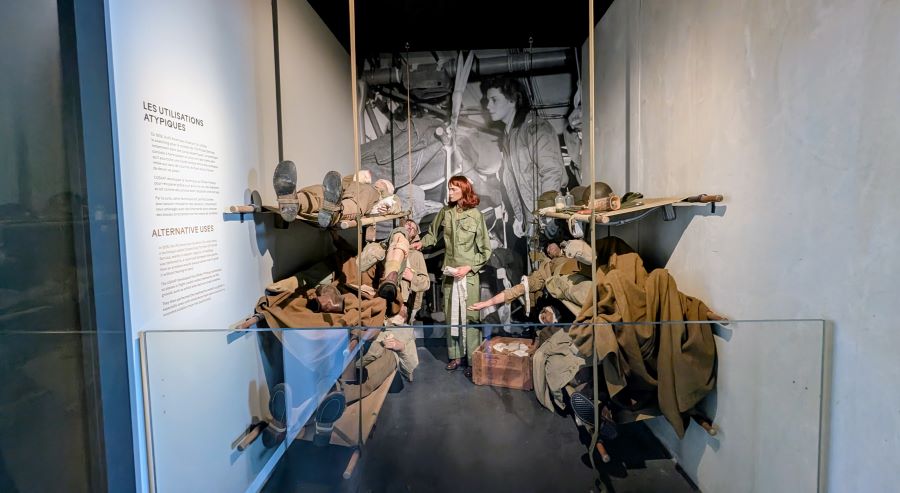
But you have to wonder how practical it was in a combat situation. How many gliders were reliably airworthy after a combat landing? How many of them still had wheels?! How many men do you need to re-allocate from combat in order to clear other gliders and wreckage from a take-off strip on the Landing Zone (LZ) and drag the GSPU glider back downwind for the take-off? If there are enemy forces nearby, how many tug aircraft pilots want to be flying slowly, close to the ground over the LZ? And, if the GSPU is for medical evacuation, how many of the wounded will survive being snatched at 150 knots?!
There’s a detailed 16 min U.S. Army training video on GSPUs, but this short Pathé newsreel of the RAF doing it (using a C-47 & Waco glider) is more fun!
Lost in Translocation?
There were some things I didn’t see in the new building. I may have missed them, but its probable that since they were related to paratroopers and not glider infantry, they’ve been moved to one of the other buildings or into storage.
There was an info panel about parachute containers. Apparently, and I didn’t know this, the parachutes were coloured for identification – which makes total sense.
- Red – Munitions, weapons, artillery
- Yellow – First aid, medical equipment
- White – General equipment
- Green – Signal corps radios, radio equipment
- Blue – Food supplies, rations
And there were two really informative maps that marked where the 82nd and 101st Airborne division paratroopers actually landed on the night of 6th June 1944.
Each dot represents a ‘stick’ of paratroopers (IE. a plane load, max 28) and the colour represents their unit.
For the 101st AB their three Landing Zones (LZs) were to the east and south-east of Sainte-Mère-Eglise…
- Landing Zone A – 502nd Parachute Infantry Regiment (PIR): Blue
- Landing Zone C – 3rd Battalion, 507 PIR plus 1st & 2nd Battalions 506 PIR Div HQ: Red
- Landing Zone D – 1st & 2nd Battalions, 501 PIR plus 3rd battalion, 506 PIR: Green
For the 82nd AB their three LZs were to the west and north-west…
- Landing Zone T – 507 PIR: Blue
- Landing Zone O – 505 PIR: Red (These guys were supposed to be the first into town)
- Landing Zone N – 508 PIR: Green
You can see how scattered and mixed up they were. The best concentrations seem to be on the 101st’s LZ D where two groups of 14 & 26 sticks came down together on the LZ.
Outside
The creation of the WACO building opened up some space on the pathway to its entrance, which the museum has used to display some more (non-airborne) vehicles. When I was there this summer, they included a 105mm M2 howitzer, a Dodge WC-51 car, and an M8 armoured car.
The Ronald Reagan Conference Centre
The conference centre is a multi-functional event space. It can be used as a conference centre or for special events but most of the time, half of it is a cinema and the other half is used for temporary exhibitions. In the past I have seen displays of French, German, Soviet, Italian WW2 paratrooper uniforms. Currently they are displaying French paratroopers uniforms and equipment used in Indochina between 1944 -1954.
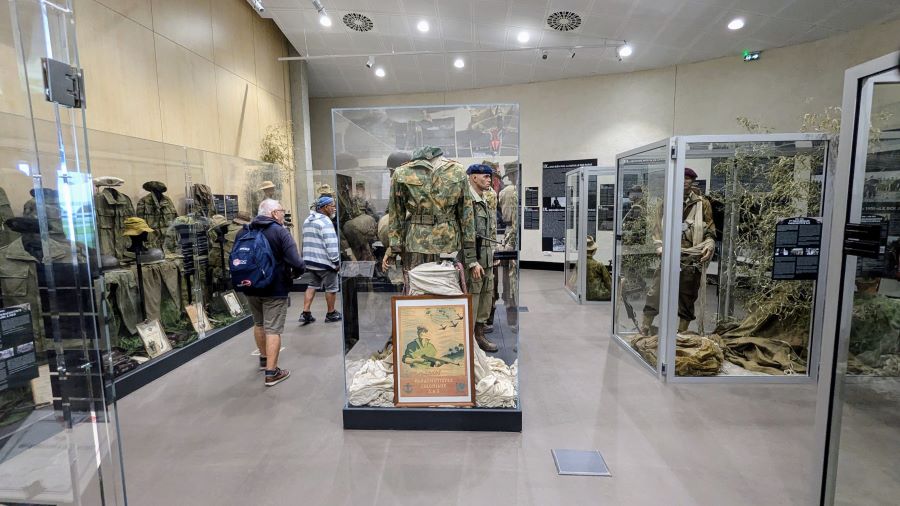
Digital Exploration
In 2018, the Airborne Museum introduced their Histopad tablet which enables visitors to delve deeper into the events surrounding Saint-Mere-Eglise and D-Day. Visitors can jump with the paratroopers, take part in the combat around the city, meet key figures, and interact with the weapons and gear of both sides.
This interactive, augmented reality touch pad (in English, Dutch, German, Spanish, Italian and French) is offered free to all visitors over 6 years old and groups visiting without guide.
The Airborne Museum Environs
The town of Sainte-Mère-Église also made some small changes around the museum in preparation for the 2024 anniversary.
- Just to the southeast of the museum on the side of the roundabout before the car parks, there’s a memorial statue of Gen. Theodore Roosevelt Jr standing with his trademark walking cane. (I remember spotting him a few days after it was inaugurated in 2023 and thinking “Wait! That’s new!”)
- On the church square, close to the Airborne Museum entrance, there’s a new statue of Gen. Dwight Eisenhower, which was unveiled 03 June 2024.
- They also took down a small warehouse to the northeast so they could expand the car parks. Unfortunately they didn’t change the unnecessarily complicated ticket machines. If it’s busy, be prepared to spend the first 15-20 mins of your visit to Sainte-Mère-Église queuing for the ticket machine.
* I’m trying to avoid the pushy sales link in the 2nd para! Mary Anne Evans and I wrote the Bradt D-Day Landings guidebook. It’s brill! Look it up on Amazon if you are interested.
** The original Waco building (shaped like a parachute) was inaugurated in 1964 by General Matt Ridgway who commanded the 82nd Airborne at Normandy. General James Gavin took over command of the 82nd Airborne after Normandy and before Operation Market Garden. It was he who opened the C-47 building in 1984.
*** And better than the D-Day Experience which I haven’t yet written up for Mechtraveller, but will.
D-Day Normandy Posts
Declaration: I’m grateful to the Airborne Museum who have always given me complementary access.
Factbox 2025
Website:
Airborne Museum
Getting there: Airborne Museum
14 rue Eisenhower
50480 Sainte-Mère-Église
France
The Airborne Museum is located next to the church in Sainte-Mère-Église on the opposite side of the large square.
Entry Price:
| Adult | € 11.50 |
| Child (6 – 16 yr old) | € 7.50 |
| Family (2 adults + 2 children) | € 33.00 |
| Family – additional children | € 5.50 each |
| Reduced rate* | € 8.50 |
* Veterans, Military personnel on vacation, People with reduced mobility
Opening Hours:
Open every day from Monday to Sunday
| May to August | 09:00 – 19:00 |
| April & September | 09:30 – 18:30 |
| October to March | 10:00 – 18:00 |
| Closed in Dec & Jan except Xmas holidays (from December 21 2025 to January 4, 2026). | |
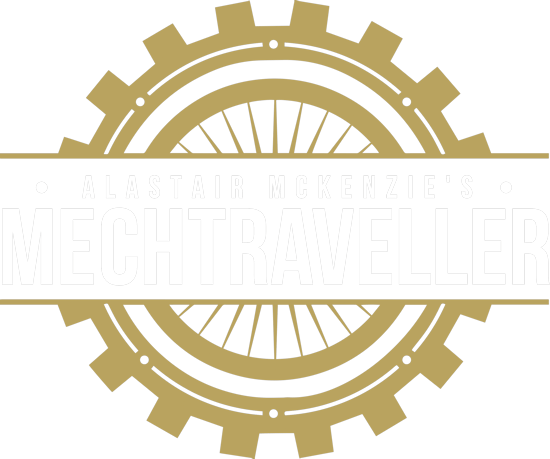
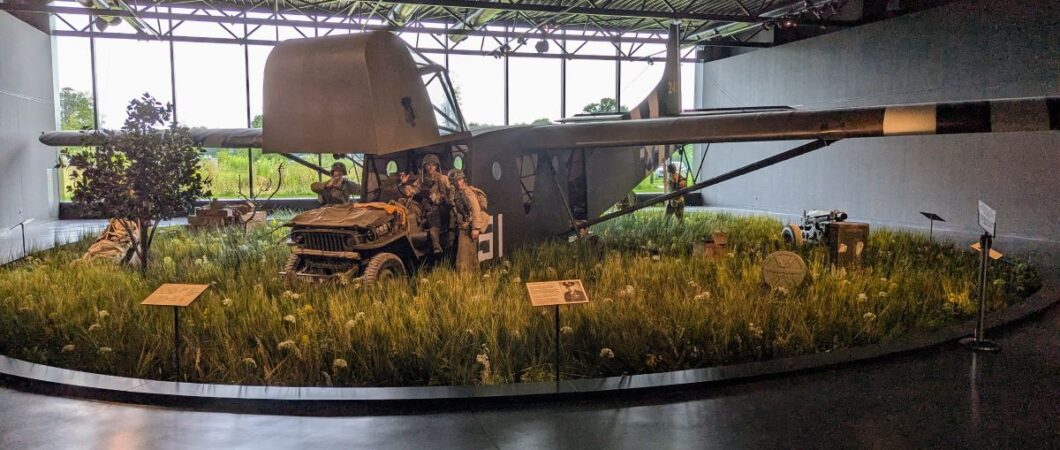
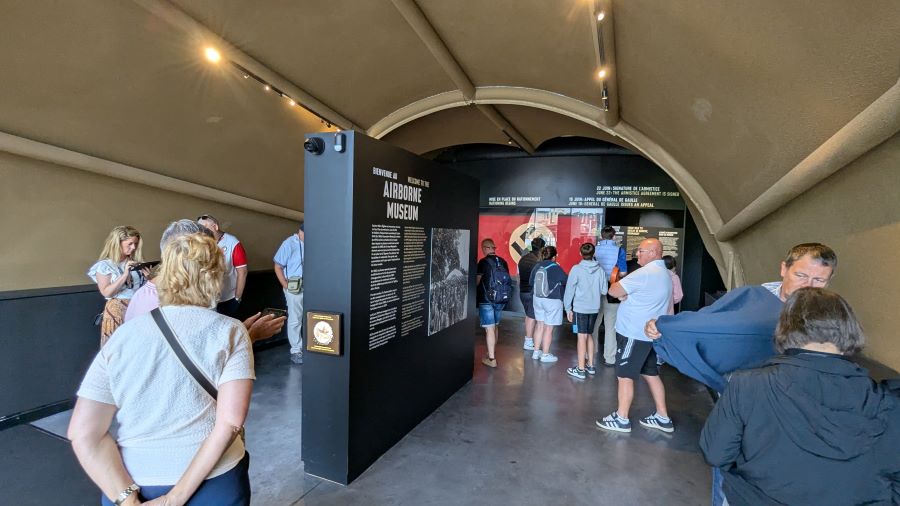
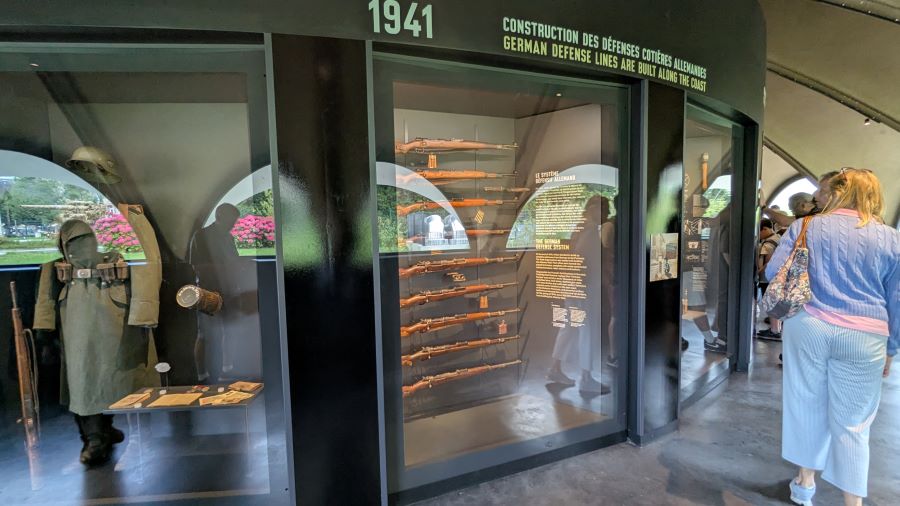
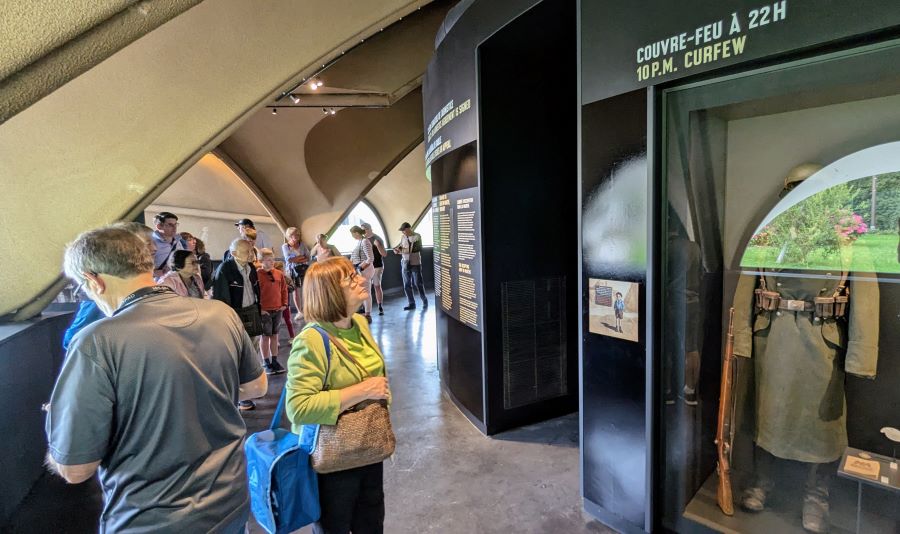
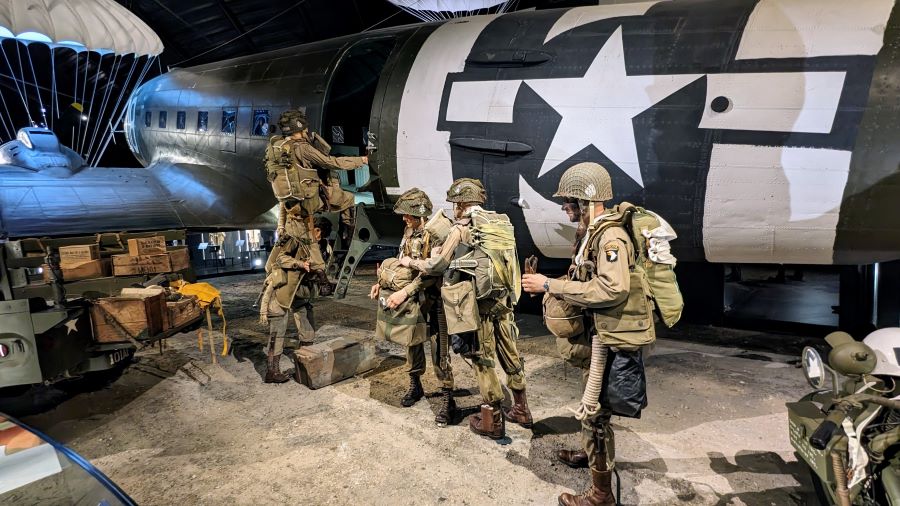
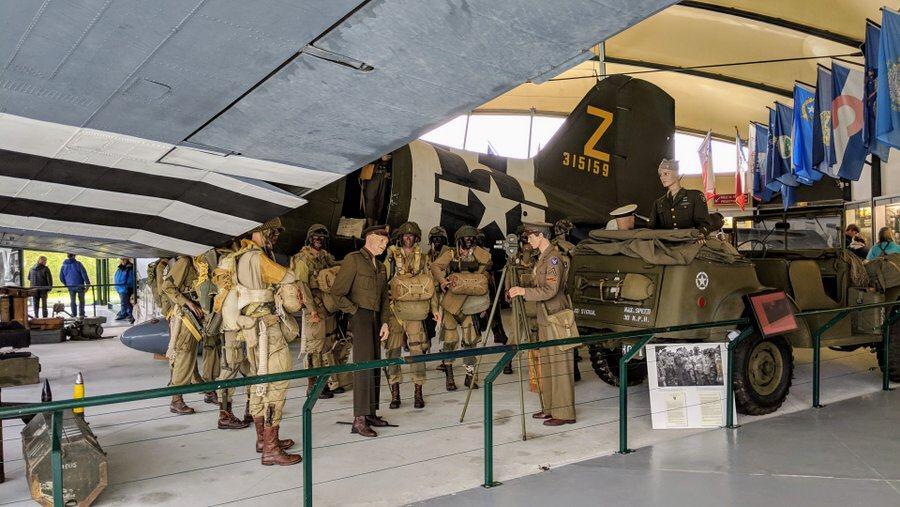
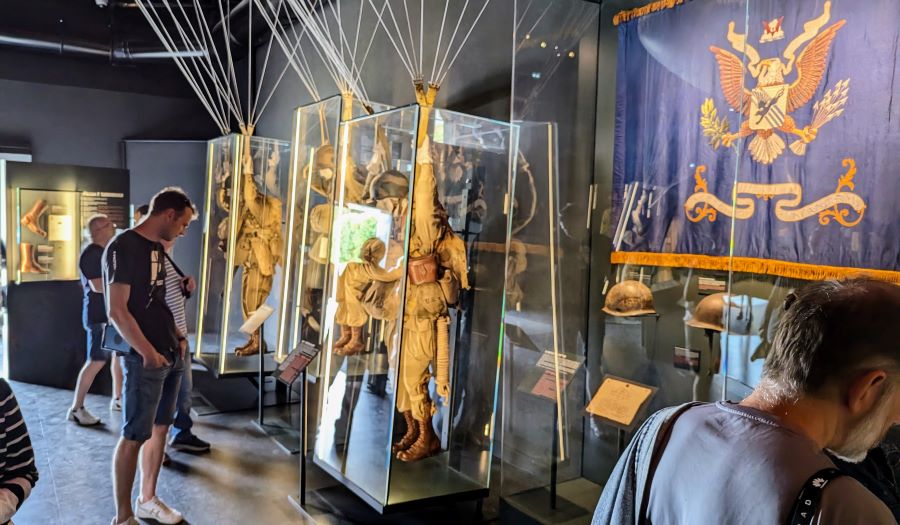
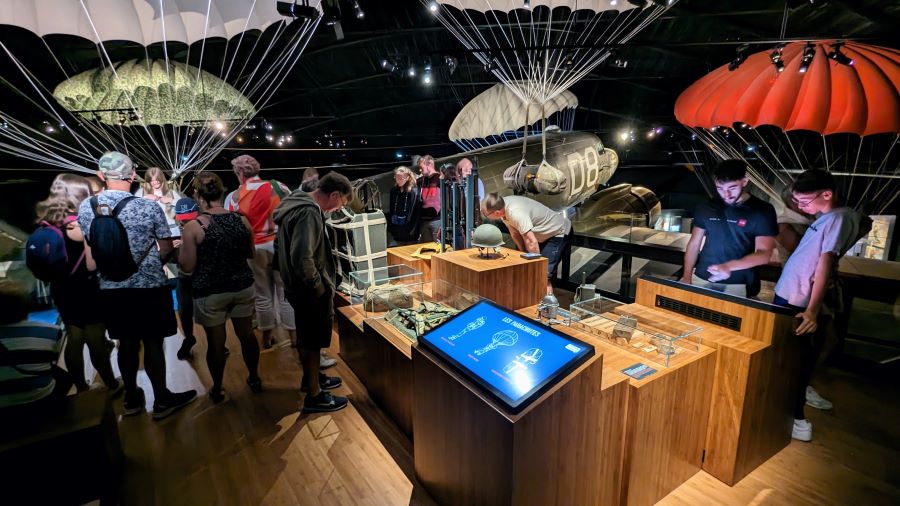
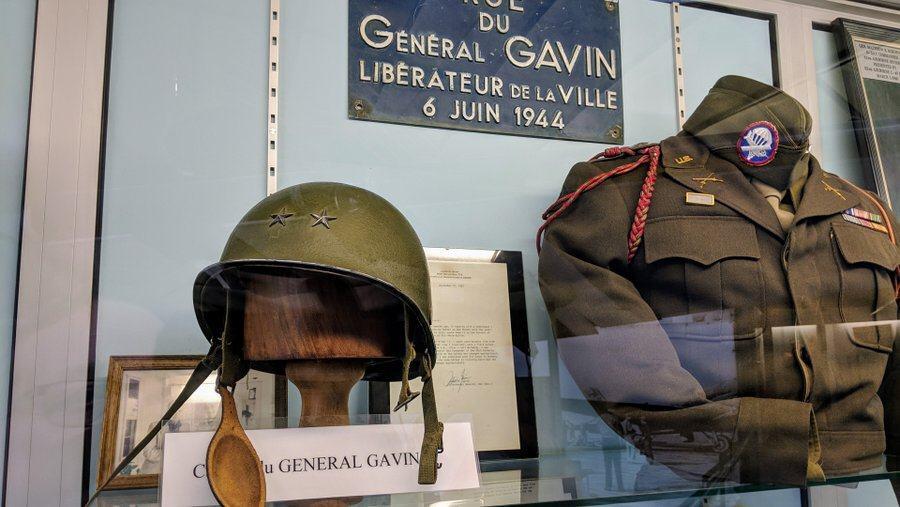
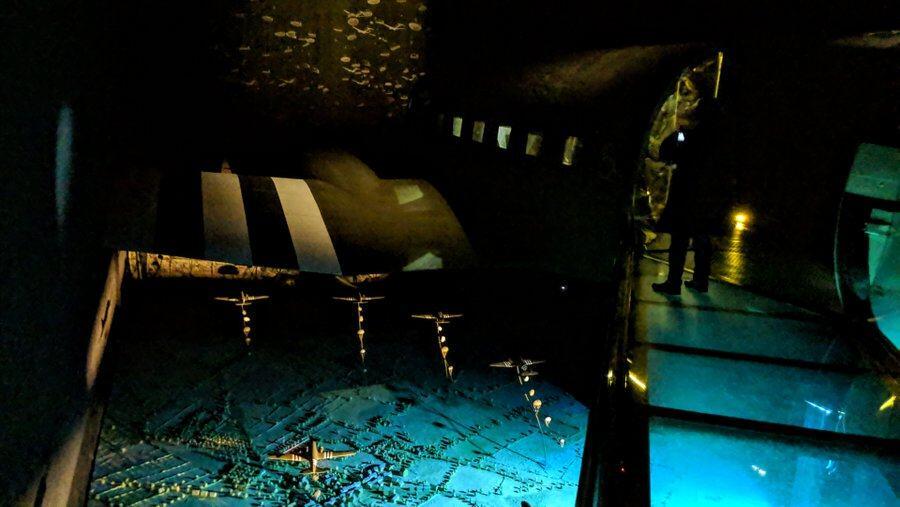
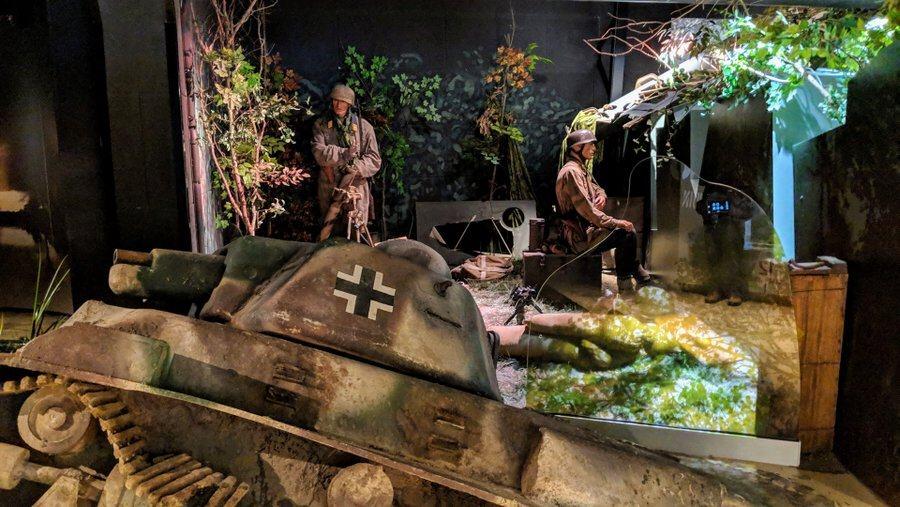
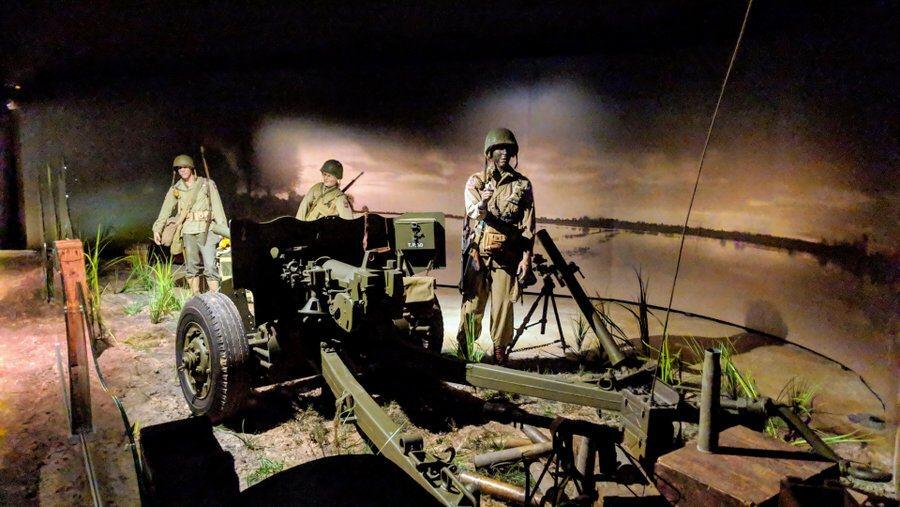
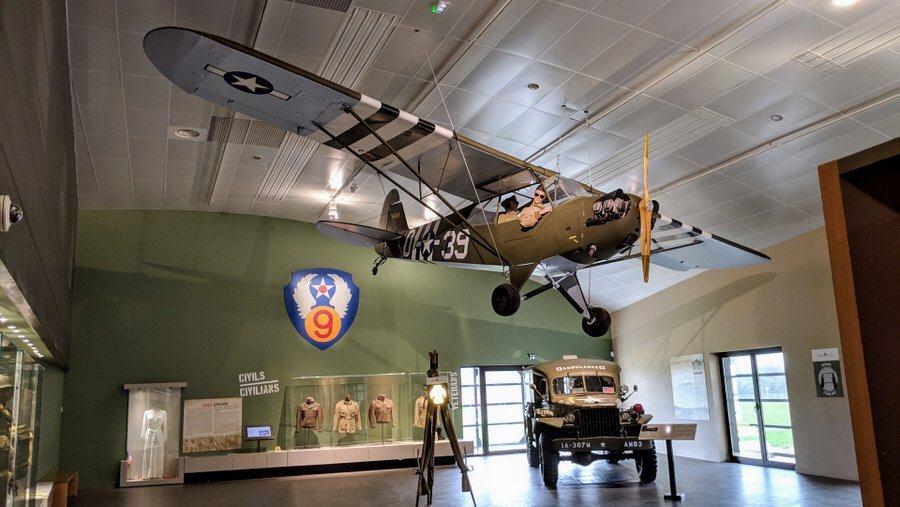
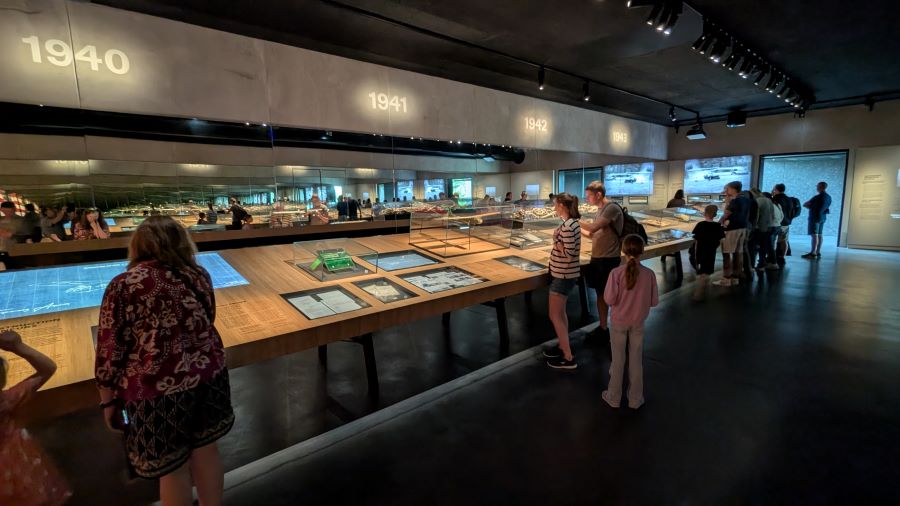
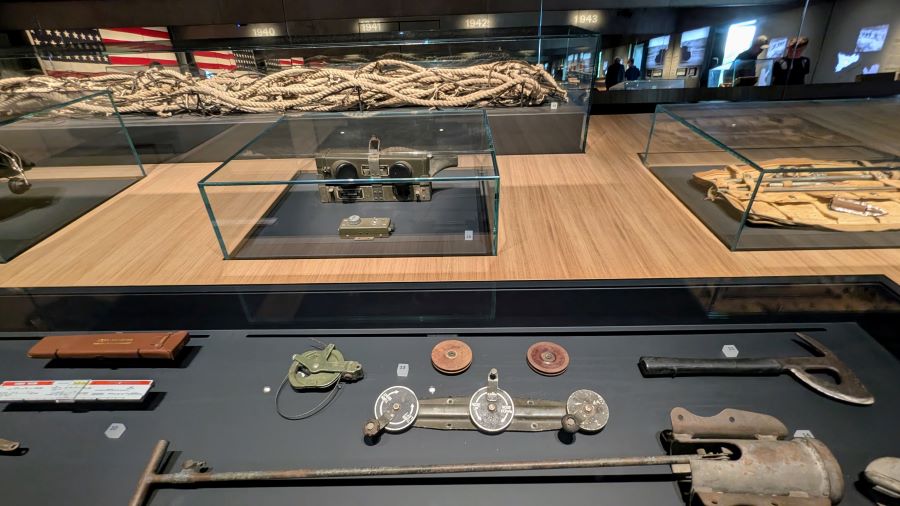
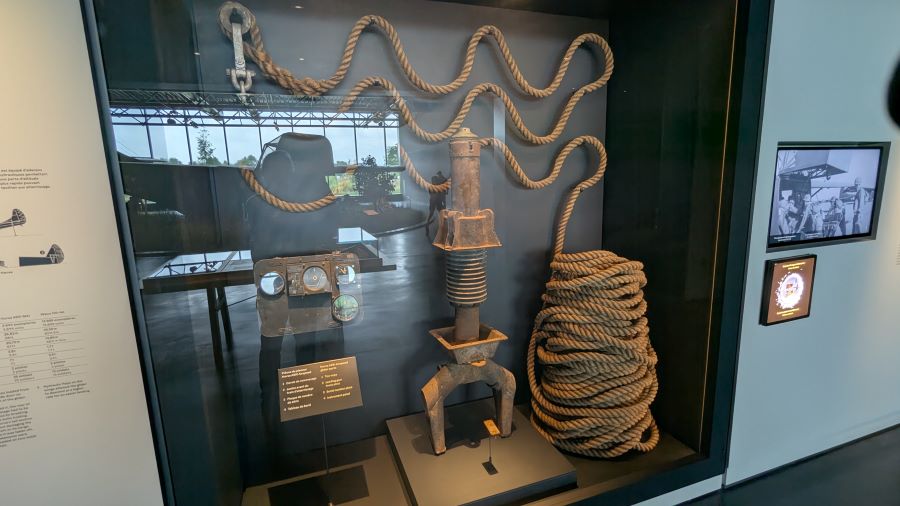
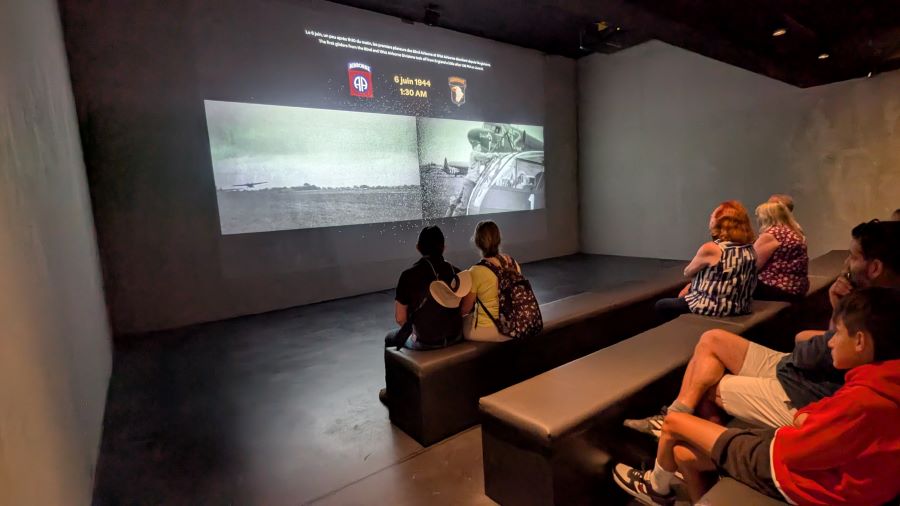
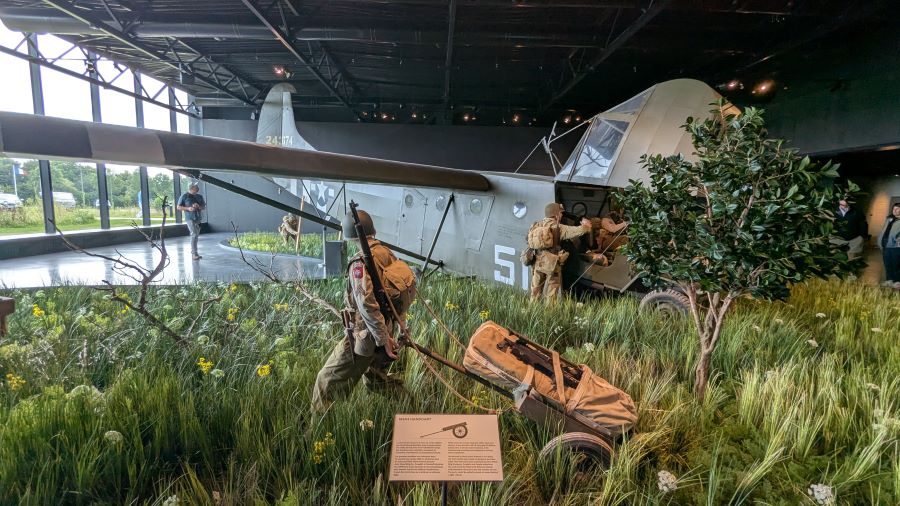
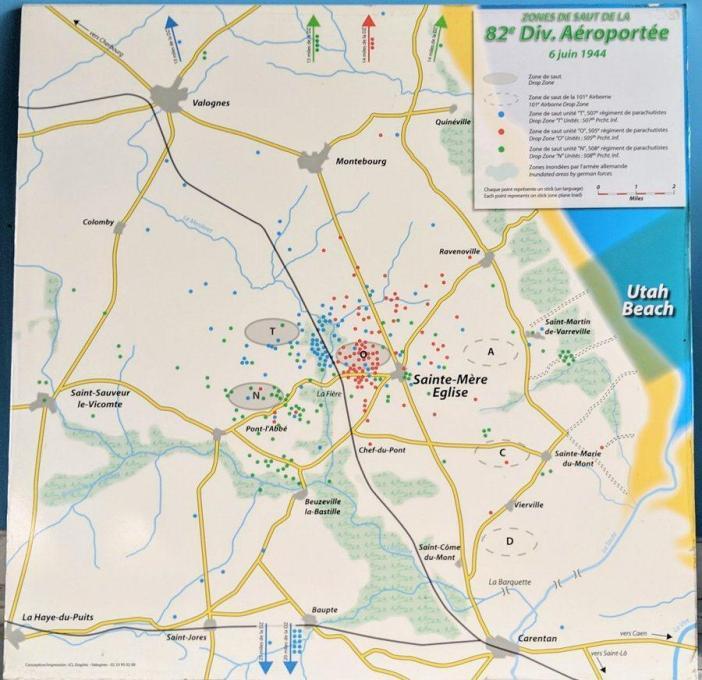
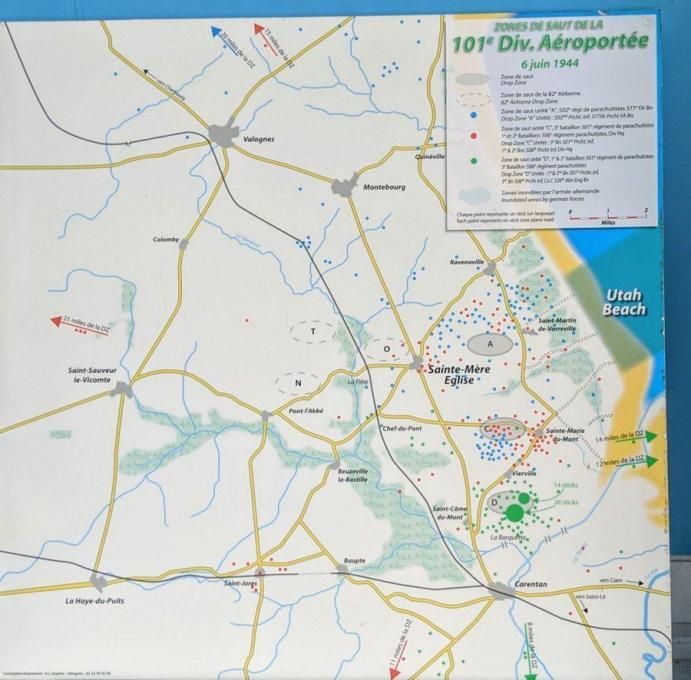
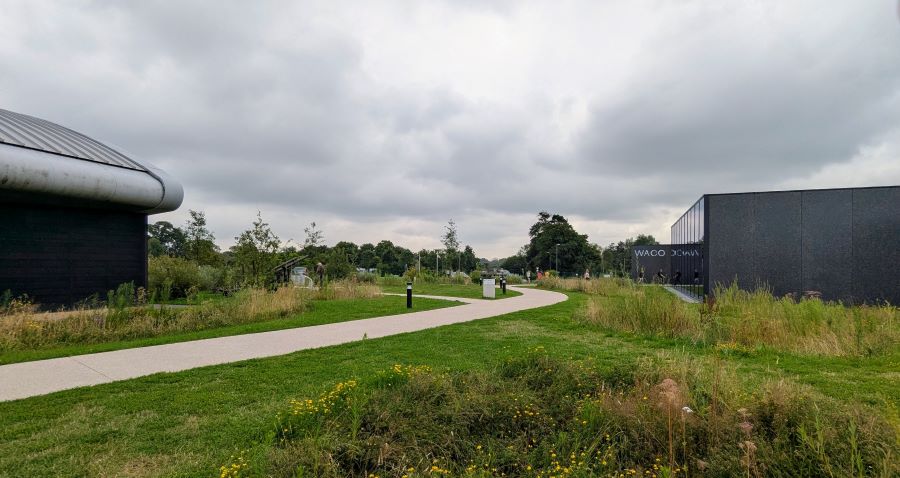
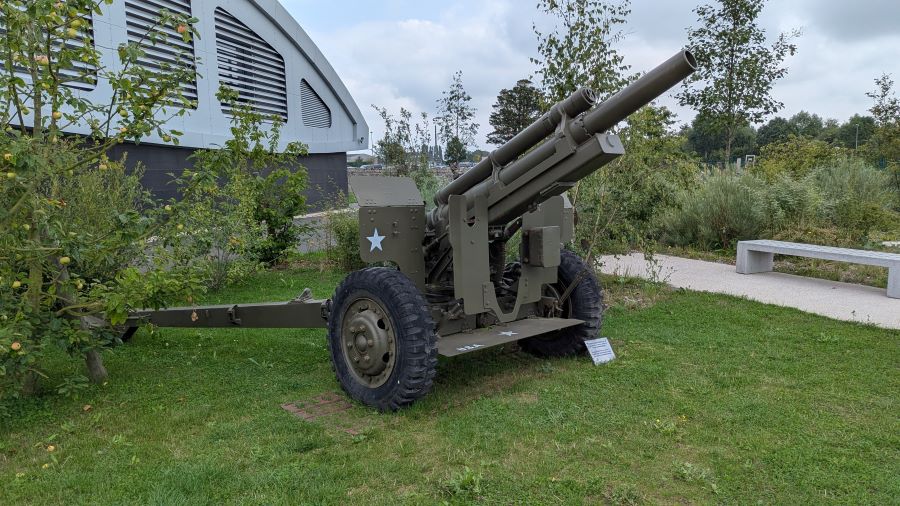
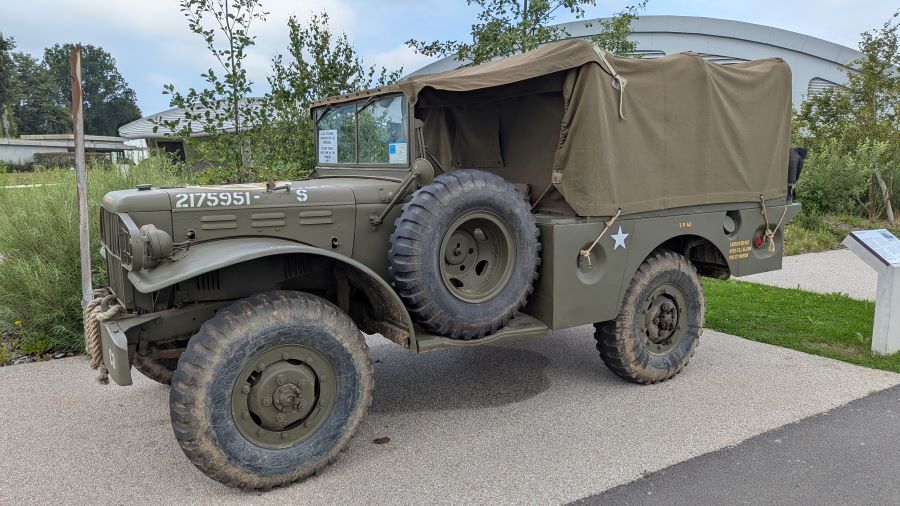
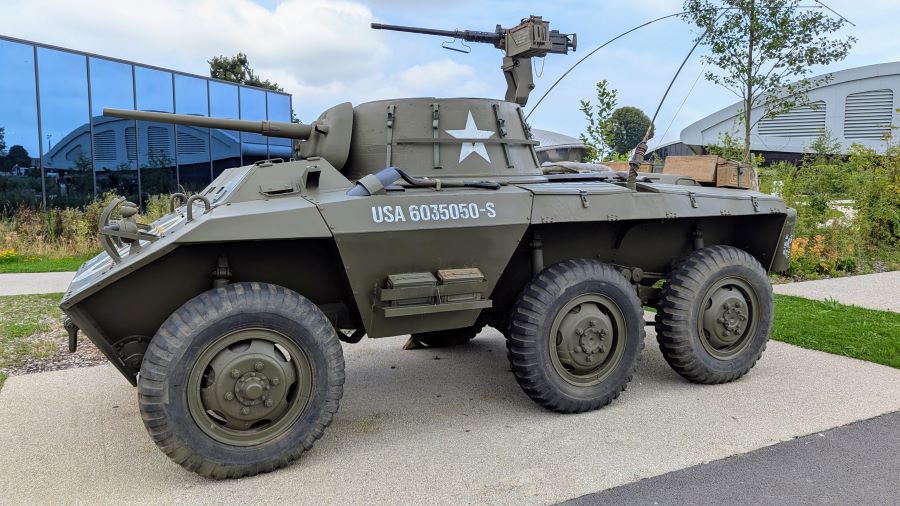
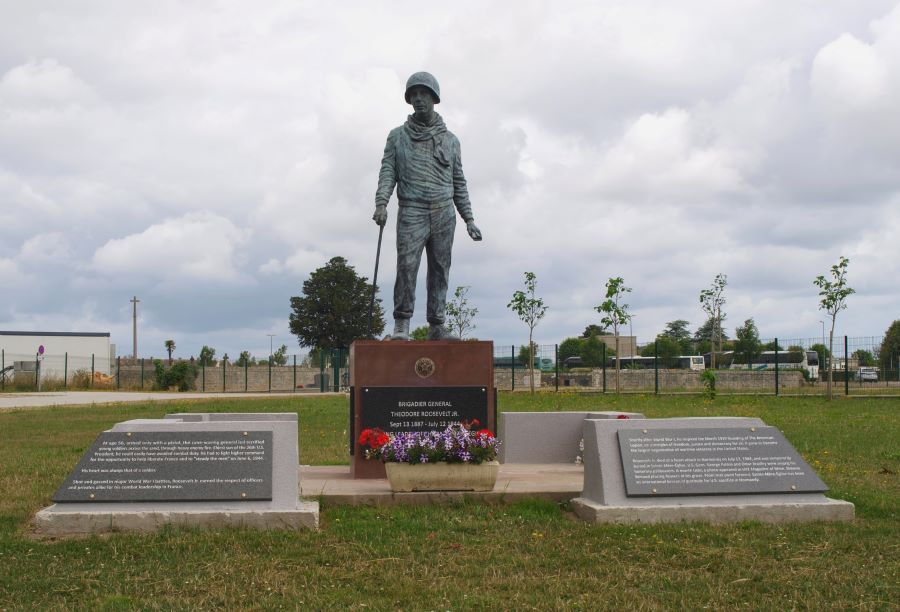
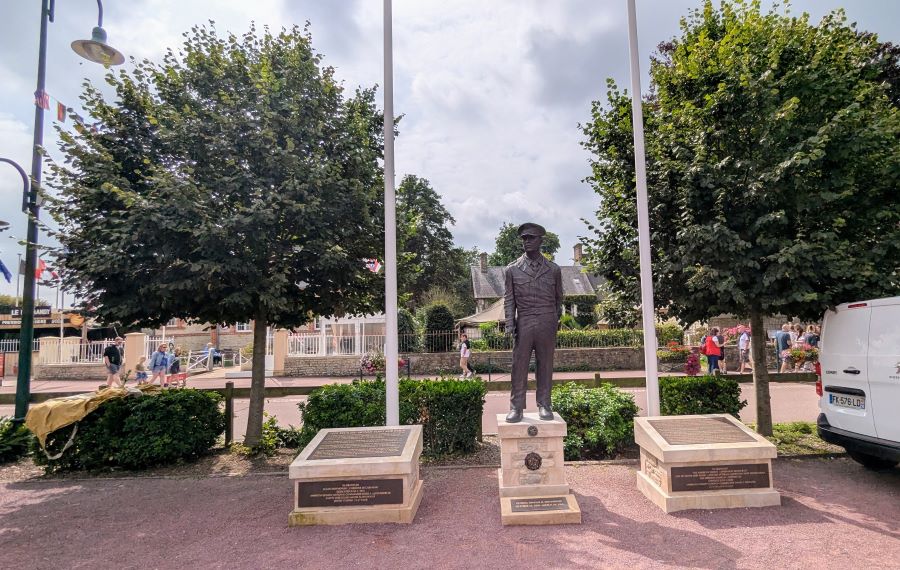
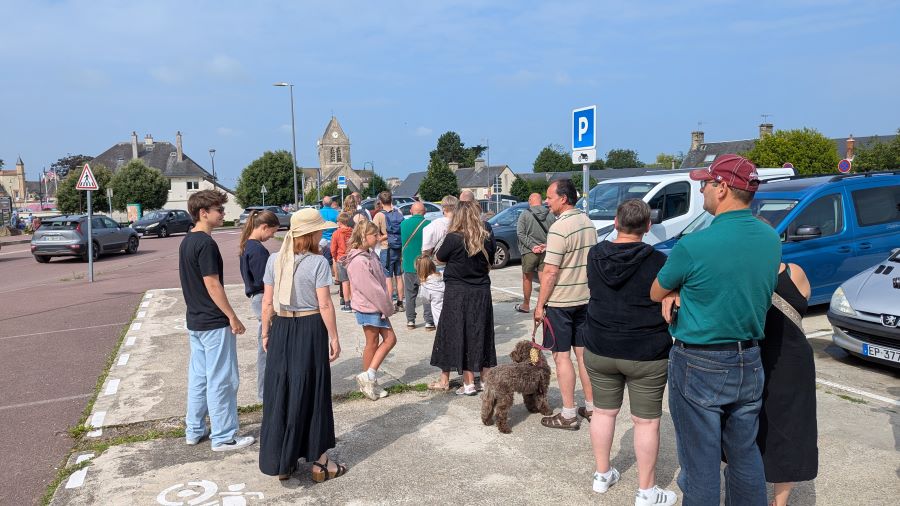
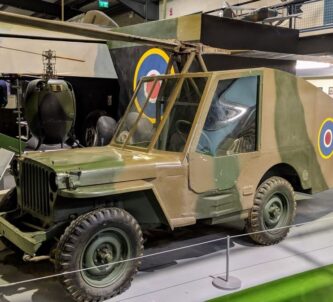
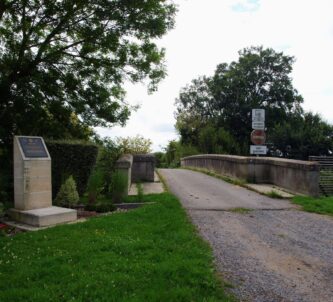
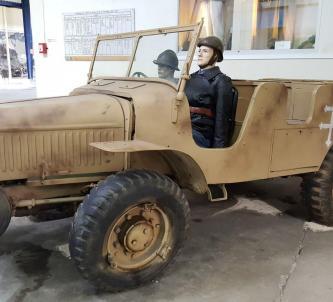
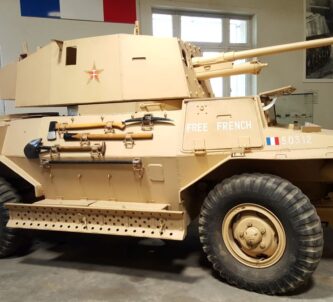
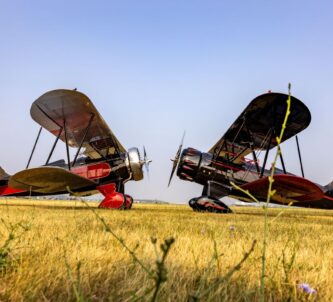
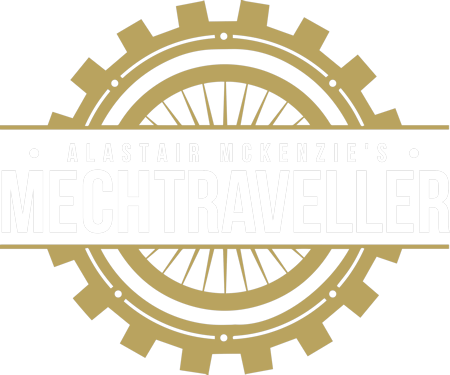
What was the primary role of the 82nd and 101st US Airborne Divisions in the D-Day operations at Sainte-Mère-Église on June 6, 1944, and what factors led to the chaotic deployment of paratroopers?
Hi, sorry for the slow reply. Been a bit busy.
Well, the role of the US Airborne was to secure the western flank of the invasion; to hold up/hamper/delay any counter-attack by German forces on the troops landing on Utah & Omaha. The British Airborne were doing the same thing on the eastern flank. Both suffered from scattered drops, with many troops missing their landing zones for a number of reasons, including navigational problems and mis-dropped pathfinder units. But the core problem was inexperience. Air transport pilot training was good… right up to the moment they found themselves in poor weather, at night, and facing intense flak. Many pilots lost track of where they were and what they were meant to be doing. Many failed to slow down to let their stick of troopers jump, resulting in wider dispersion and loss of equipment (paratroopers rifles and equipment were ripped away in the slipstream) and, dare I say it, many felt a compelling need to ‘dump & run’. One other factor that affected gliders more than paratroopers, was the tendency to overload, thus making flying unbalanced and difficult. If you were a trooper, wouldn’t you want to take that extra clip of ammo or grenade? Added up, it made flying difficult for pilots!